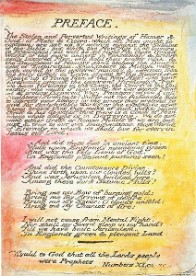Why Singing Jerusalem?
The WI first sang the hymn at their annual general meeting at Londons Queens Hall, Langham Place, in 1924 when Sir Walford Davies wrote a special arrangement for the occasion.
Anne Stamper, honorary archivist for the National Federation of Women’s Institutes, said: “From its foundation in 1917 the NFWI searched for a “song” to provide one way of uniting all the newly formed WIs".
"Finally, in 1924, they adopted Blake’s Jerusalem to Parry’s setting. The general secretary wrote in the national magazine, Home And Country, ‘Jerusalem is a happy choice, for the delegates sing hopefully of the New Jerusalem which every institute member is helping to build.’
“By singing Jerusalem the WI is marking its links with the wider women’s movement, and its commitment to ‘improving the conditions of rural life."
All pictures included in this website and the video below, have been taken in and around Calder Vale by our dedicated local WI members Danielle and Maria.
Blake's poem: Jerusalem
And did those feet in ancient time,
Walk upon Englands mountains green:
And was the holy Lamb of God,
On England pleasant pastures seen !
And did the Countenance Divine,
Shine forth upon our clouded hills ?
And was Jerusalem builded here,
Among these dark Satanic Mills ?
Bring me my bow of burning gold:
Bring me my arrows of desire:
Bring me my spear: O clouds, unfold!
Bring me my chariot of fire!
I will not cease from mental fight,
Nor shall my sword sleep in my hand
Till we have built Jerusalem
In England's green and pleasant land.

Above, the preface to Milton, as it appeared in Blake's own illuminated version.
"And did those feet in ancient time" is a short poem by William Blake from the preface to his epic Milton: a Poem (1804). Today it is best known as the hymn "Jerusalem," with music by C. Hubert H. Parry in 1916.
Jerusalem is considered to be England's most popular patriotic song, it has been used as an alternative national anthem and there have been calls to give it official status.
During the 1920s, many Women's Institute started closing meetings by singing it, and this caught on nationally. Although it has never actually been adopted as the WI's official anthem, in practice it holds that position and, together with jam-making, is an enduring element of the public image of the WI.
Main reference: Wikipedia